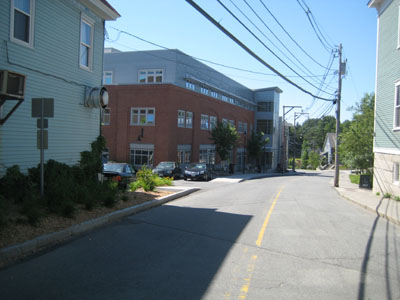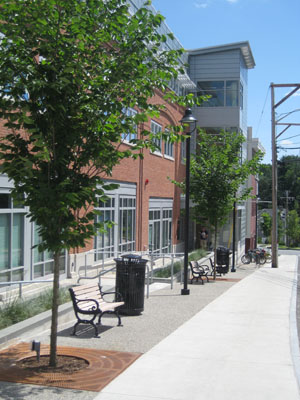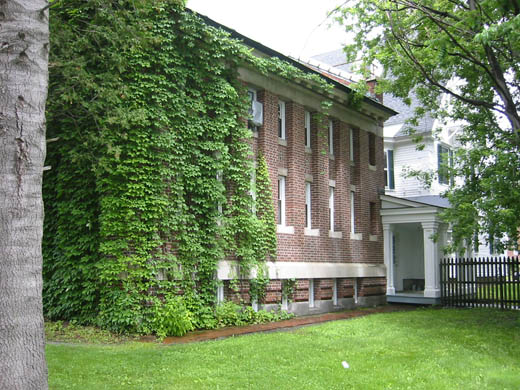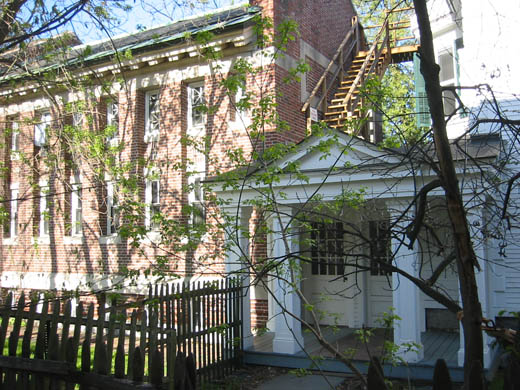Dartmouth, which owns the Hanover Inn and the mostly-1960s building it inhabits, recently decided to get out of the business of running a hotel and will turn over the Inn’s management to Carpenter & Co. (The Dartmouth, Valley News, more Valley News, press release on the search).
The Inn has had plans for what appears to be an interior renovation for some time now. It is not clear how the switch affect these plans.
The outsourcing of the Inn’s management is part of a long and shifting relationship. The first tavern on the corner was officially sited by Dartmouth, which conveyed the land to Ebenezer Brewster for the purpose. Brewster was a careful selection: he was made the Steward of Dartmouth College and was granted a tavern license by local authorities who were friendly to the college and in some cases would have been Dartmouth professors.
That was in the 1770s. Buildings came and went on the same site on the corner. After about 40 years the tavern, which had probably always housed paying guests, became the Dartmouth Hotel. It continued for another 85 years or so as an “independent” operation.
After the Dartmouth Hotel burned in 1887, the college bought the land. The college had a succession of intentions. At first it seems only to have wanted to sell the land to a sufficiently reputable hotelier and let him replace the building. Then it decided to erect the building itself and lease out the hotel to an independent manager. (I think it did try leasing out the building in this way for a time.) Eventually the school decided that it would not only own the building but operate it too.
Dartmouth operated the Wheelock Hotel in its new building, renaming the hotel as the Hanover Inn in 1902. The Inn’s operators played up Brewster’s history, putting an image (or a supposed image) of him on the Inn’s sign. The same jolly man of girth also appeared on the sign of the Inn’s motel — the Hanover Inn Motor Lodge — and lent his name to a nearby dormitory for Inn employees.
Dartmouth demolished the 1887 Inn in 1966 and hired a hotel architect to replace it.







